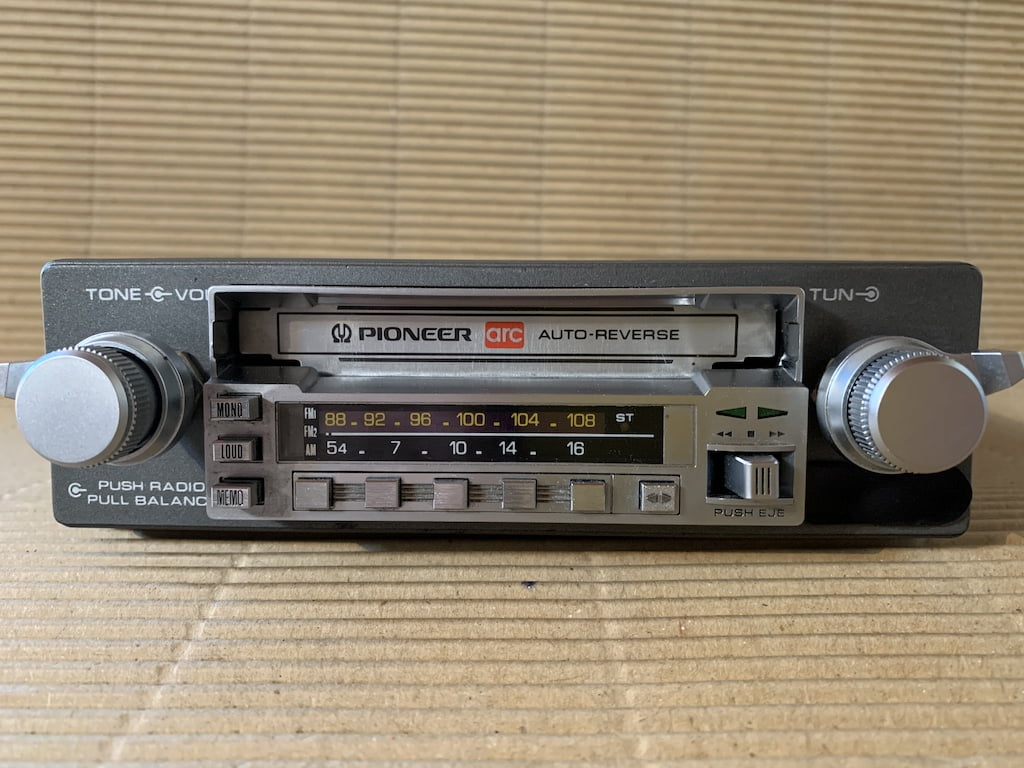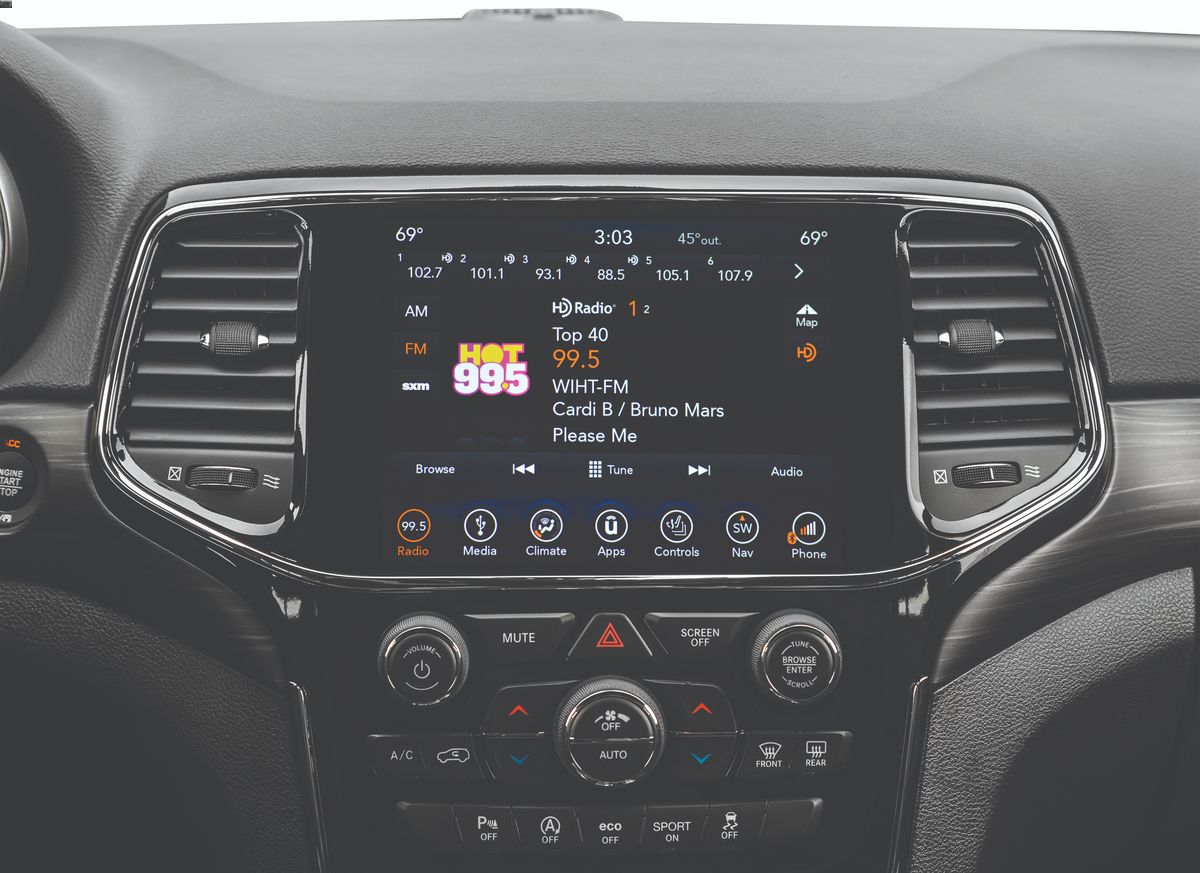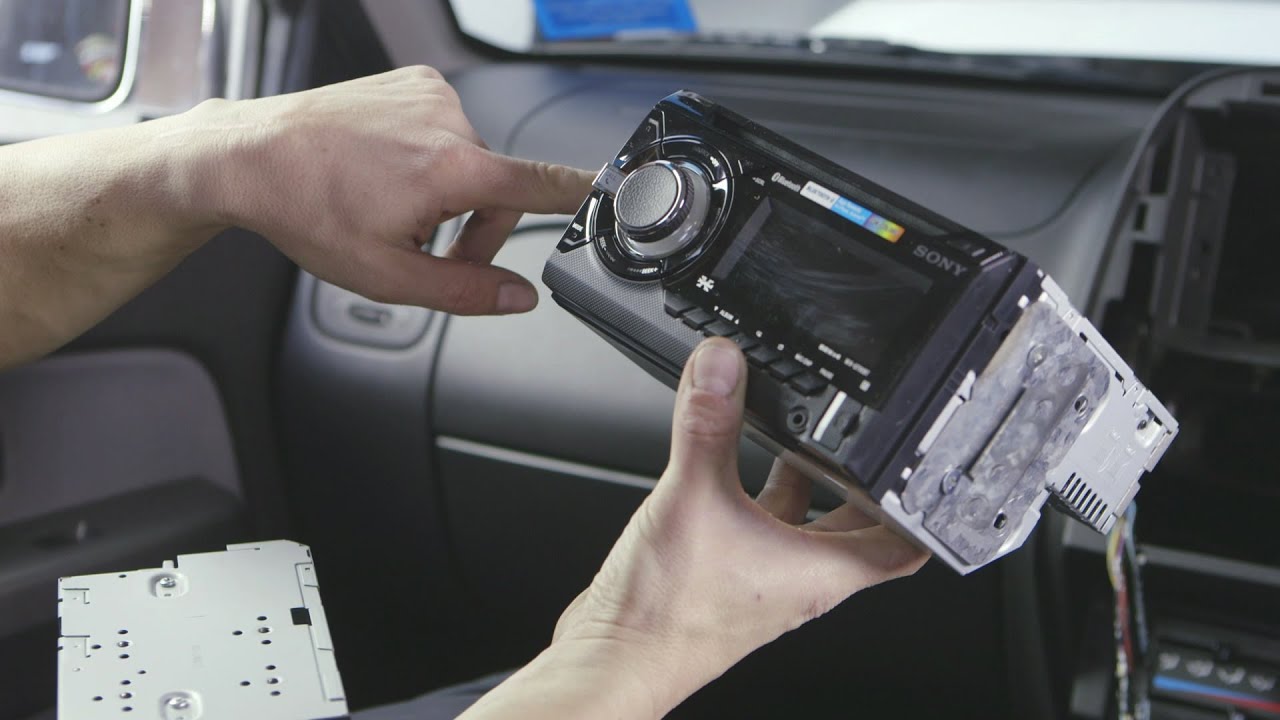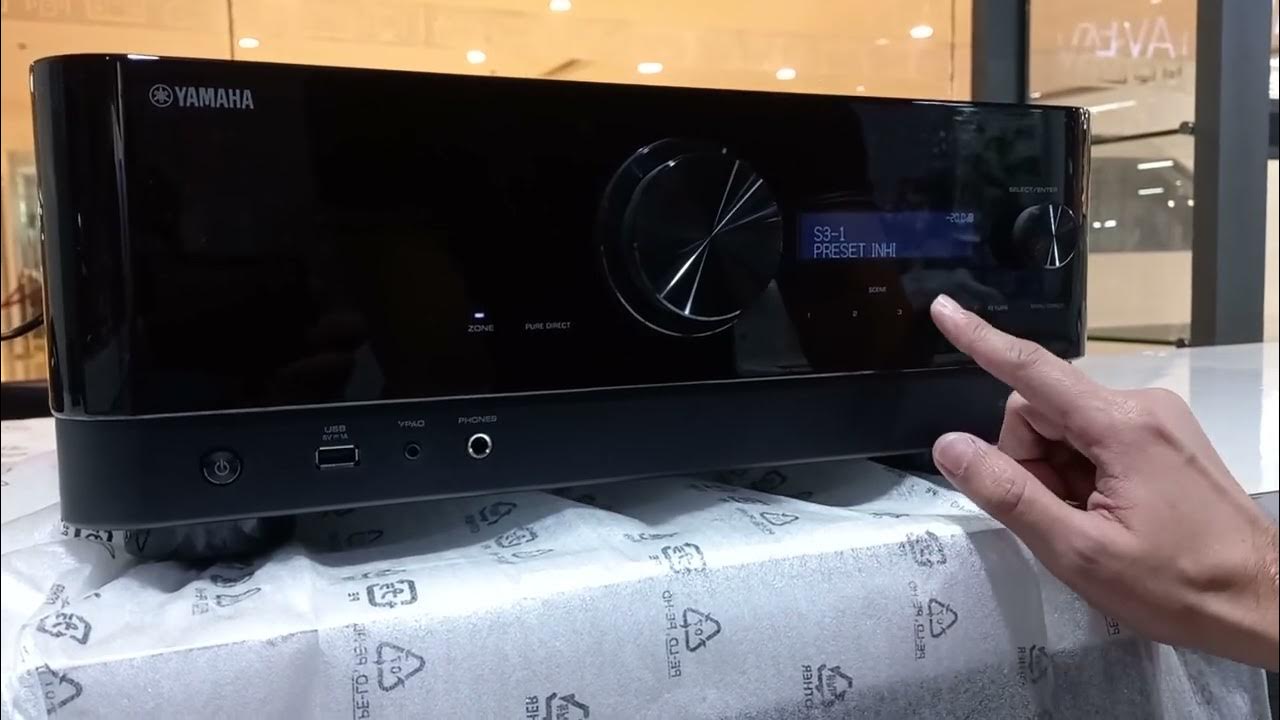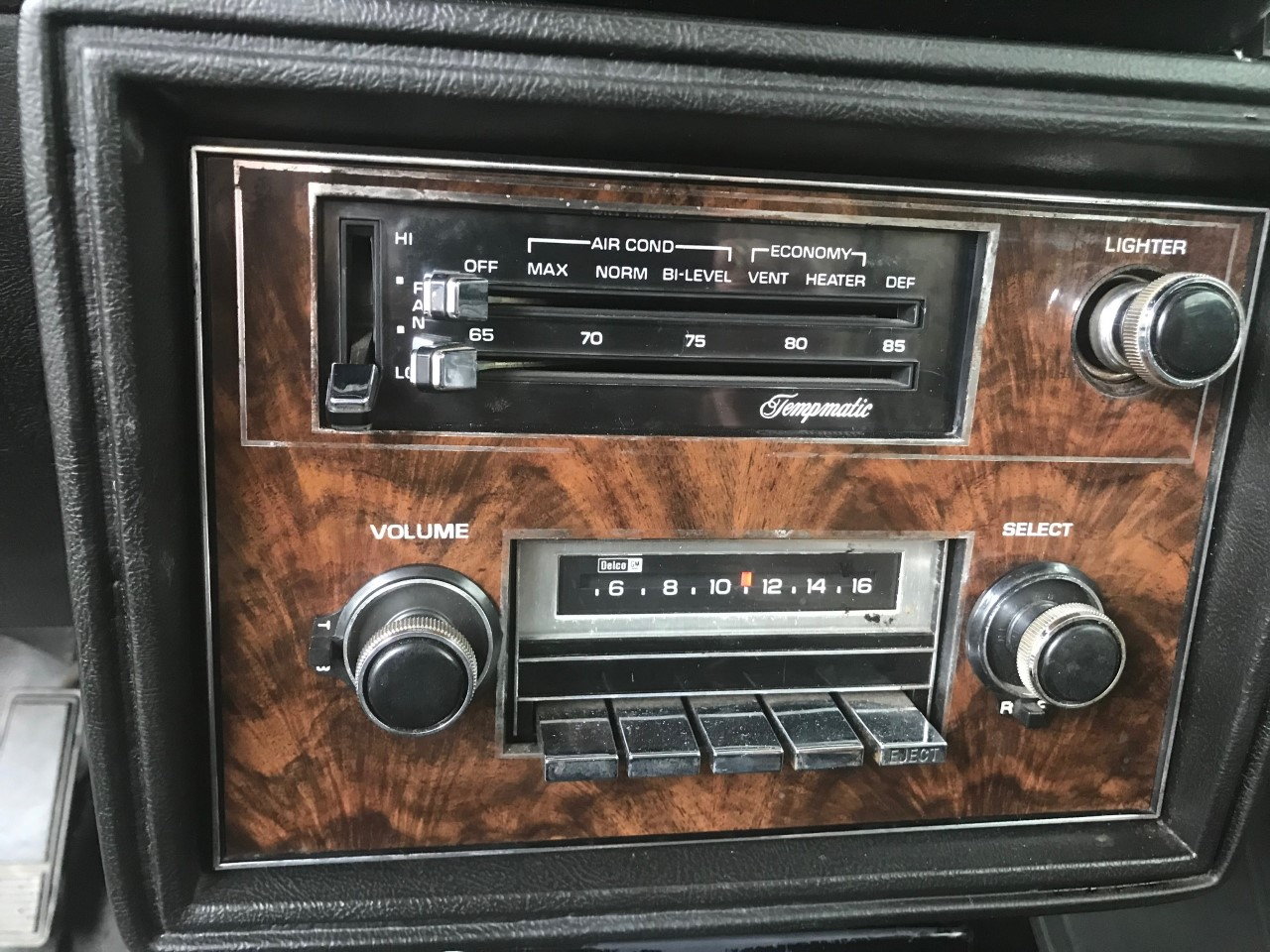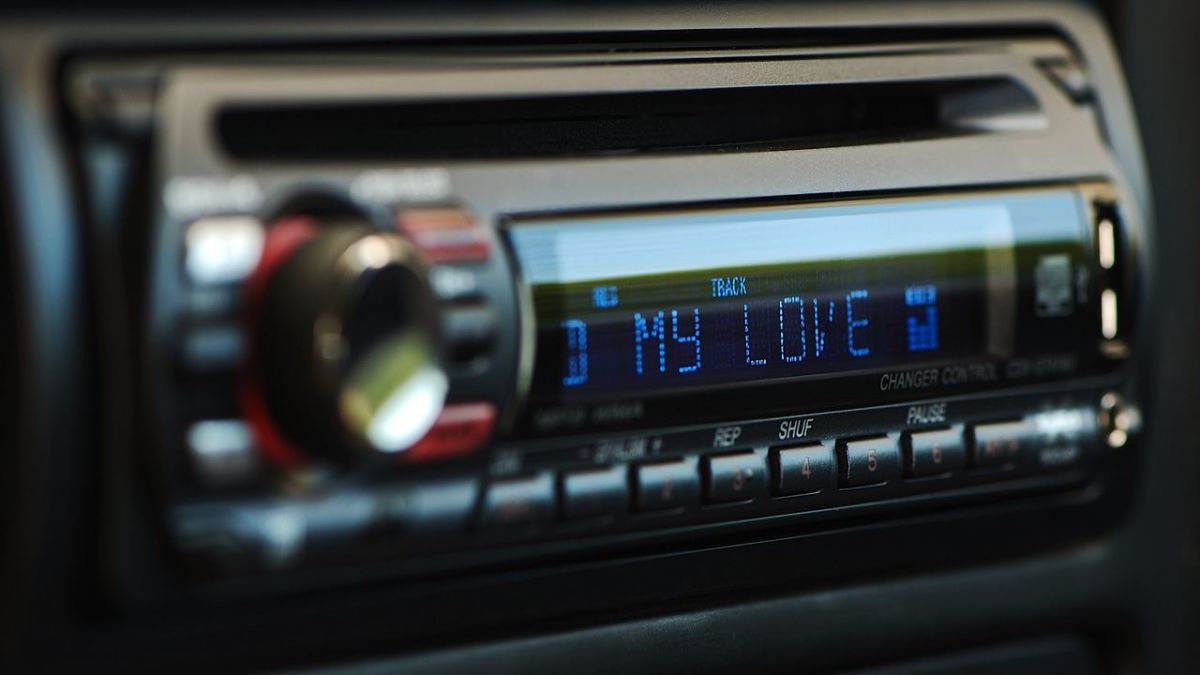Home>Devices & Equipment>Radio>How To Keep The Radio On When Car Is Off
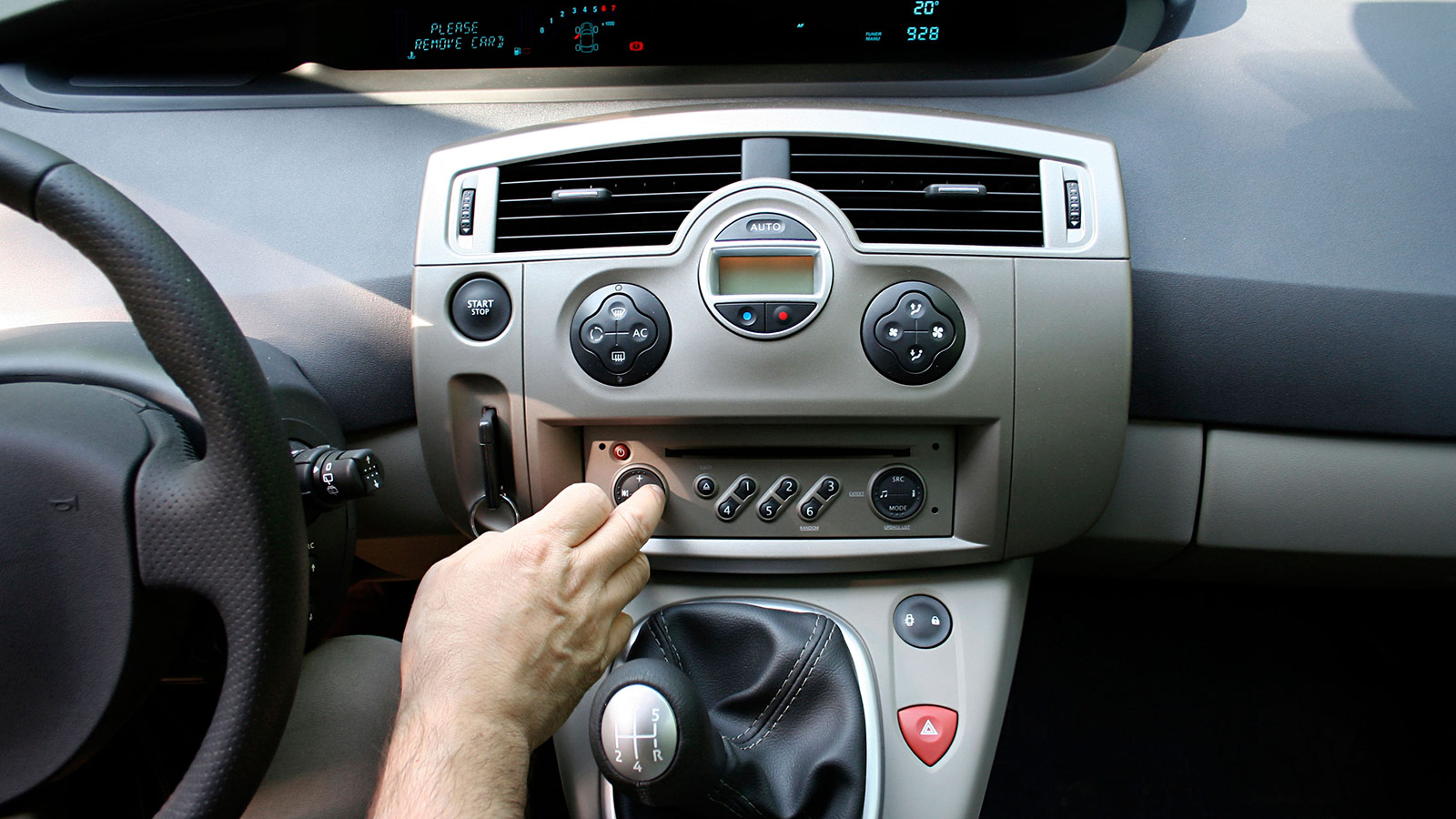

Radio
How To Keep The Radio On When Car Is Off
Modified: January 22, 2024
Learn how to keep your car radio playing even when your car is turned off. Discover simple tips and tricks to enjoy uninterrupted music with our step-by-step guide.
(Many of the links in this article redirect to a specific reviewed product. Your purchase of these products through affiliate links helps to generate commission for AudioLover.com, at no extra cost. Learn more)
Table of Contents
Introduction
In today’s fast-paced world, radio remains one of the most popular forms of entertainment and a source of information for many people. Whether you enjoy listening to music, keeping up with the latest news, or tuning in to your favorite talk shows, having access to your radio even when your car is off can be highly convenient. In this article, we will explore various methods to keep your radio on when your car is not running.
Understanding your car’s electrical system is crucial to finding a solution that suits your needs. Most car radios are designed to power on when the car’s ignition is turned on and turn off when the car is turned off. This is because the radio is directly connected to the car’s battery, relying on its electrical supply. However, there are ways to enjoy your radio without draining your car’s battery or relying solely on the car’s electrical system.
Exploring different power options for your radio is the key to keeping it on even when your car is off. These options include using the radio’s accessory mode, installing a power relay, connecting to an external power source, utilizing a power inverter, or using a portable battery pack. Each option has its own advantages and considerations, depending on your specific needs and circumstances.
In the following sections, we will delve deeper into each of these options, explaining how they work and providing step-by-step instructions on how to implement them. By the end of this article, you will have a comprehensive understanding of how to keep your radio on when your car is off, allowing you to enjoy your favorite tunes or stay connected to the latest news and talk shows at any time.
Understanding the Car’s Electrical System
Before exploring options to keep your radio on when your car is off, it is important to have a basic understanding of your car’s electrical system. The electrical system in a car consists primarily of a battery, an alternator, and various electrical components that rely on this power supply.
The battery is responsible for providing electrical power to the car when the engine is not running. It stores energy in chemical form and converts it into electrical energy to power the car’s electrical components. It is typically located under the hood of the car in an accessible area.
The alternator, on the other hand, charges the battery and provides electrical power to the car’s electrical system when the engine is running. It is driven by the engine’s crankshaft and converts mechanical energy into electrical energy. The alternator helps replenish the battery’s charge and powers the car’s electrical components while the engine is running.
When you turn on the car’s ignition, the electrical system becomes active, and power is routed to various components, including the radio. The radio is typically connected directly to the car’s battery, which allows it to power on and function when the ignition is turned on.
However, when you turn off the car’s ignition, power to the radio is cut off, and it shuts down. This is done to prevent the radio from draining the battery when the car is not in use. While this default behavior is designed to conserve battery life, there are alternative methods to keep the radio on even when the car is off.
Now that we have a basic understanding of the car’s electrical system and how it affects the radio’s power supply, let’s explore various power options that can enable you to keep the radio on when the car is not running.
Exploring Radio Power Options
When it comes to keeping your radio on when the car is off, there are several power options you can consider. These options provide alternative power sources for your radio, allowing you to enjoy uninterrupted music, news, or talk shows even when your car is not running. Let’s take a closer look at these power options:
- Using the Radio’s Accessory Mode: Many car radios have an accessory mode that allows them to operate without the car’s engine running. This mode usually enables the radio to run for a limited period, such as 10-20 minutes, before it automatically turns off to avoid draining the battery. Accessory mode is useful for short periods, but if you want continuous power, you’ll need to explore other options.
- Installing a Power Relay: A power relay is a device that can be installed between the car’s battery and the radio. It acts as a switch, controlling the power supply to the radio. By utilizing a power relay, you can manually control when the radio receives power, even when the car is off. This allows you to keep the radio on for extended periods without draining the car’s battery excessively.
- Connecting to an External Power Source: Another option is to connect your radio to an external power source, such as a separate battery pack or a power outlet. This method provides a dedicated power supply for your radio, independent of the car’s electrical system. By utilizing an external power source, you can keep the radio on for as long as the power source lasts, without affecting your car’s battery.
- Utilizing a Power Inverter: A power inverter is a device that converts DC power from your car’s battery into AC power, allowing you to connect and power devices that require AC power. By using a power inverter, you can plug your radio into the inverter and keep it on while your car is off. However, it’s important to consider the power consumption of your radio and the capacity of the inverter to ensure compatibility.
- Using a Portable Battery Pack: If you want to enjoy your radio on the go without relying on the car’s electrical system, a portable battery pack is a convenient option. These battery packs are designed to provide power to various electronic devices, including radios. By connecting your radio to a portable battery pack, you can keep it on for hours or even days, depending on the capacity of the battery pack.
Each power option has its own advantages and considerations, so it’s essential to choose the option that best suits your needs and circumstances. In the following sections, we will provide detailed instructions on how to implement each power option, allowing you to keep your radio on when your car is not running and enjoy uninterrupted entertainment and information.
Using the Radio’s Accessory Mode
Many car radios have an accessory mode, which allows them to function without the engine running. This mode provides a limited power supply to the radio, typically for a duration of 10-20 minutes, before automatically turning off to prevent draining the car’s battery. While accessory mode is not a long-term solution, it can be useful for short periods when you want to enjoy your radio without the engine running.
To use the radio’s accessory mode, follow these steps:
- Turn off the car’s engine and remove the key from the ignition.
- Locate the radio’s power button or knob. In most car models, this is the same button or knob that you use to turn on the radio.
- Press and hold the power button or turn the knob to activate the accessory mode. Depending on your car model, you may need to press and hold the button for a few seconds to enable accessory mode.
- Your radio should now be powered on in accessory mode. You can adjust the volume, change stations, or listen to your favorite music, news, or talk shows.
- Keep in mind that the radio will automatically turn off after a set period, usually 10-20 minutes, to conserve battery power. If you want to continue using the radio, you may need to repeat the steps to reactivate the accessory mode.
While using the radio’s accessory mode is a convenient option for short periods, it is not ideal for extended use as it can drain the car’s battery if left on for too long. If you want continuous power for your radio without relying solely on the car’s electrical system, you may need to explore other power options.
Next, we will explore the option of installing a power relay, which allows you to manually control the power supply to the radio, even when the car is not running.
Installing a Power Relay
If you want to have more control over the power supply to your car radio when the engine is off, installing a power relay can be a practical solution. A power relay acts as a switch that allows you to manually control the flow of power from the car’s battery to the radio.
Here’s a step-by-step guide on how to install a power relay:
- Start by gathering the necessary materials. You will need a power relay, a fuse holder, a fuse, wire strippers, electrical tape, and wires with appropriate gauge size.
- Locate the positive terminal of your car’s battery. It usually has a red or orange cover and a + sign.
- Disconnect the negative terminal of the battery to prevent any accidental electrical discharge.
- Identify the wire that goes from your car’s ignition switch to the radio. This wire supplies power to the radio when the car’s ignition is on.
- Using wire strippers, strip a small segment of insulation from the wire’s end.
- Connect one end of a wire to the stripped section of the ignition wire. Make sure to securely fasten the connection using electrical tape or soldering.
- Connect the other end of the wire to the control terminal of the power relay. This terminal is usually labeled as “control,” “trigger,” or “coil.”
- Connect a wire from the power terminal of the power relay to the positive terminal of your car’s battery. Ensure a secure connection.
- Mount the power relay and fuse holder in a location that is easily accessible but protected from moisture and excessive heat.
- Insert an appropriate fuse into the fuse holder.
- Connect a wire from the radio’s positive power input to the power terminal of the power relay.
- Reconnect the negative terminal of the car battery.
- Test the power relay by turning on the car’s ignition. The radio should now receive power even when the engine is off.
By installing a power relay, you gain control over when the radio receives power, allowing you to enjoy uninterrupted music or talk shows without draining the car’s battery excessively. However, it’s important to note that the power relay will not protect your car’s battery from discharging completely if the radio is left on for extended periods. Therefore, it’s recommended to use the power relay judiciously and avoid keeping the radio on for prolonged periods without the engine running.
Next, we will explore the option of connecting the radio to an external power source for independent power supply.
Connecting to External Power Source
If you want to keep your car radio on when the car is off without relying on the car’s electrical system, connecting it to an external power source is a viable option. By doing so, you can ensure a dedicated power supply for your radio without draining your car’s battery. Here’s how you can connect your radio to an external power source:
- Choose an appropriate external power source for your radio. This can include a separate battery pack, a power outlet, or even a solar-powered system.
- If you are using a separate battery pack, ensure it has sufficient capacity to power your radio for the desired duration.
- Identify the power input of your radio. It is typically labeled as “Power” or “DC Input” on the back of the radio unit.
- Obtain the necessary cables and connectors to connect the external power source to the radio.
- Connect one end of the cable to the power output of the external power source.
- Connect the other end of the cable to the power input of the radio. Ensure a secure connection.
- If required, turn on the external power source or activate the power outlet to supply power to the radio.
- Your radio should now receive power from the external power source, allowing you to keep it on even when the car is off.
Connecting your radio to an external power source provides independence from the car’s electrical system and ensures uninterrupted power supply. However, it’s essential to consider the capacity of the external power source and plan accordingly to avoid running out of power during extended periods of use.
The specific connection method and cables required may vary depending on the type of external power source you are using. Make sure to follow the manufacturer’s instructions and ensure the compatibility of the cables and connectors with your radio and external power source.
Next, we will discuss the option of utilizing a power inverter to power your car radio when the car is off.
Utilizing a Power Inverter
If you want to power your car radio when the car is off and you have access to a reliable power source, a power inverter can be a great option. A power inverter converts the direct current (DC) power from your car’s battery into alternating current (AC) power, allowing you to connect and power devices that require AC power. Here’s how you can utilize a power inverter to power your car radio:
- Purchase a power inverter with sufficient wattage to power your car radio. Consider the power consumption of your radio to determine the appropriate wattage.
- Locate a suitable location to install the power inverter in your car. It should be easily accessible and protected from excessive heat and moisture.
- Connect the power inverter to your car’s battery. Follow the manufacturer’s instructions for proper connection and ensure that the inverter is grounded.
- Identify the AC power outlets on the power inverter. These outlets resemble the ones found in typical homes.
- Connect a standard power cord from your car radio to one of the AC power outlets on the inverter.
- Make sure to securely plug the power cord into the AC power outlet on the inverter.
- Turn on the power inverter, usually by pressing a power button or flipping a switch.
- Once the power inverter is activated, your car radio should receive power and function as it would when the car is on.
It’s important to note that power inverters come with different power capacities, so make sure to select one that can handle the power requirements of your car radio. Additionally, keep in mind the limitations of your car’s battery capacity and avoid draining it excessively by using the power inverter for extended periods without the car running.
Utilizing a power inverter provides you with the flexibility to power various AC devices, including your car radio. However, it’s crucial to consider the power consumption of your radio and the capacity of the power inverter to ensure compatibility and avoid overloading the inverter.
Next, we will discuss another portable power option – using a portable battery pack to keep your car radio on when the car is off.
Using a Portable Battery Pack
If you’re looking for a portable and convenient solution to power your car radio when the car is off, using a portable battery pack is a great option. These battery packs are designed to provide power to various electronic devices, including radios. Here’s how you can use a portable battery pack to keep your car radio on:
- Purchase a portable battery pack with sufficient capacity to power your car radio for your desired duration. Consider the power consumption of your radio to determine the appropriate capacity.
- Ensure that the battery pack has a DC output port or a USB port that can be used to connect your car radio.
- Connect one end of the cable to the DC output port or USB port of the battery pack.
- Connect the other end of the cable to the power input of your car radio. Ensure a secure connection.
- Turn on the battery pack and activate the appropriate output mode, if applicable.
- Your car radio should now receive power from the portable battery pack, allowing you to keep it on when the car is off.
Using a portable battery pack gives you the freedom to power your car radio anywhere, independent of the car’s electrical system. It is especially useful for outdoor activities, road trips, or situations where you do not have access to a power source.
Make sure to choose a portable battery pack with sufficient capacity to meet your power needs. Keep in mind that the runtime of the battery pack will vary depending on its capacity and the power consumption of your car radio. It’s also a good idea to have a backup battery pack or alternate power source in case your primary battery pack runs out of power.
By using a portable battery pack, you can enjoy your car radio even when the car is off, providing entertainment or news wherever you go.
Next, we will conclude our discussion and summarize the various power options to keep your car radio on when the car is off.
Conclusion
Keeping your car radio on when the car is off can enhance your entertainment and information options while on the go. We have explored various power options that allow you to keep your radio running even when the car’s engine is not running.
Understanding the car’s electrical system and its default behavior towards the radio is crucial. Most car radios are wired to receive power when the ignition is turned on and turn off when the car is off. However, by exploring alternative power options, you can overcome this limitation.
Utilizing the radio’s accessory mode is a convenient short-term option, allowing you to enjoy your radio for a limited time after turning off the car. Installing a power relay gives you control over the power supply, allowing you to manually activate or deactivate the radio’s power, protecting your car’s battery from excessive drain.
Connecting your radio to an external power source, such as a battery pack or a power outlet, provides independent power supply, while utilizing a power inverter enables you to convert your car’s battery power into AC power for the radio. Lastly, using a portable battery pack gives you portable and convenient power on the go.
When deciding which option to choose, consider factors such as power requirements, duration of use, convenience, and compatibility with your car’s electrical system. Each option has its own advantages and considerations, so choose the one that best fits your needs and circumstances.
By implementing these power options, you can enjoy uninterrupted music, news, and talk shows, even when your car engine is off. Whether you’re going on a road trip, enjoying outdoor activities, or simply want to relax in your parked car, these solutions will ensure your car radio remains a source of entertainment and information.
Remember, it’s important to use these power options responsibly and avoid draining the car’s battery excessively, which can adversely affect its performance.
With the power of these options at your fingertips, you can keep the radio on and enjoy your favorite tunes, engage in thought-provoking discussions, and stay informed no matter where your journey takes you.

